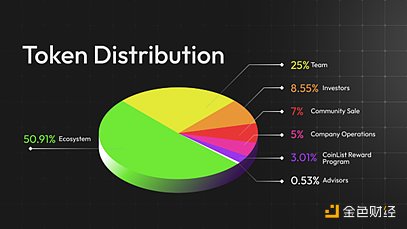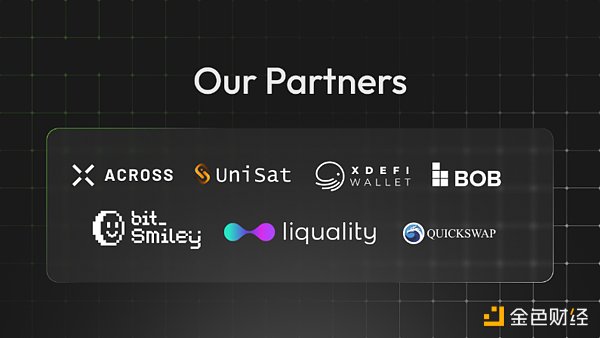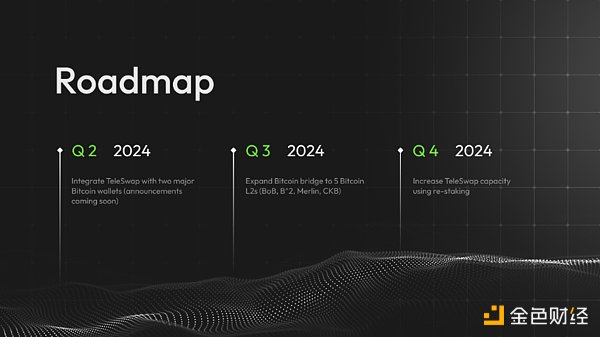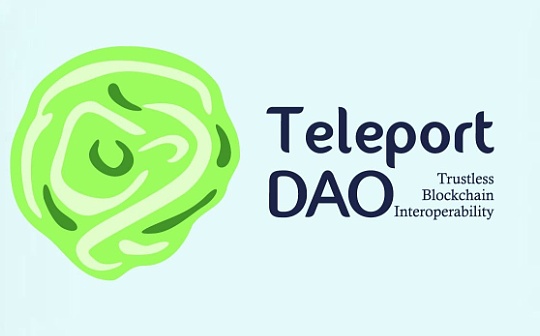Author: TeleportDAO team, translation: Jinse Finance xiaozou
Note: CoinList announced that it will conduct the TeleportDAO community public sale from 17:00 on April 11th to 17:00 on April 18th UTC. TeleportDAO is an interoperability protocol that provides cross-chain application infrastructure from Bitcoin to EVM chain. TeleportDAO is also Coinlist's 2022 Fall Seed Batch Project.
1, Preface
TeleportDAO enables trustless Bitcoin-level secure connections from Bitcoin to EVM chain and Bitcoin L2 solutions through light client bridges. The protocol facilitates Bitcoin bridges and supports the creation of cross-chain applications for Bitcoin.
TeleportDAO's light client bridge supports message transmission from Bitcoin to EVM chain, launching two important decentralized applications (dApps).
TeleSwap:This is a decentralized trading platform that enables users to seamlessly bridge and exchange BTC and BRC-20s between Ethereum, Polygon, and BNB Chain with unparalleled security.
TeleOrdinal:The first cross-chain market for Bitcoin NFTs (Ordinals), which can be used from the EVM chain to bid on Ordinals in a decentralized manner using stablecoins.
2Highlights
Build secure cross-chain applications for Bitcoin:TeleportDAO is a unique trustless light client bridge that connects Bitcoin, its L2 protocol, and EVM chains such as Ethereum, BNB Chain, and Polygon. It enables building secure and trustless cross-chain applications for Bitcoin, such as Bitcoin lending, Bitcoin-backed stablecoins, Ordinal lending, and more.
Trade BTC and BRC-20s with ERC-20s:TeleSwap is the ultimate liquidity protocol for Bitcoin assets, facilitating fully trustless swaps between native Bitcoin and BRC-20s and any ERC-20 token, setting a new benchmark for Bitcoin liquidity and accessibility.
Buy Ordinals from all EVMs:TeleOrdinal launches the first trustless marketplace for Ordinals and BRC-20 tokens, providing a user-friendly and secure platform for trading with stablecoins.
3、Coinlist Sales
TeleportDAO token sale details are as follows:
Token sale date:UTC time April 11, 2024 17:00 - April 18, 2024 17:00
Token price:$0.075
Distribution schedule:20% unlocked after 75 days, and the remaining 80% distributed within 6 months. Token exchange listing is expected to take place around July 17, 2024.
Fully Diluted Network Valuation: $75,000,000
Total Token Supply: 1,000,000,000 TST
Coinlist Public Sale Supply: 70,000,000 TST; i.e. 7% of Total Supply
Minimum Purchase Amount: $100
Maximum Purchase Amount: $2000
Contribution Methods: USDC, USDT
Restricted Participants:Residents of the United States (and its territories), Canada, China, the Republic of Korea, and certain jurisdictions are not eligible to participate in this sale.
NOTE: During the TeleportDAO Token Sale, TeleportDAO may, at its sole discretion, sell an additional 25,000,000 TST (2.5% of total supply).
4Token Economics
The TeleportDAO System Token (TST) provides critical functions in the network, specifically affecting the operation of locker and teleporter nodes, and providing benefits to users.
Locker nodes, which are critical to maintaining the integrity of the network, are currently required to lock up native tokens in order to function properly. However, plans are underway to transfer this requirement to TST tokens. As network activity increases, particularly with an increase in wrapping and unwrapping transactions, locker nodes will need to lock up more TST tokens as collateral. This shift will increase the utilization of TST, making it a core element of network operations.
Similarly, teleporter nodes, which play a key role in processing cross-chain proofs for TeleSwap and TeleOrdinal, will be required to lock up TST tokens. This requirement ensures their operation while also expanding the utilization of TST, as it is integral to these critical network functions.
For users, using TST tokens can bring tangible benefits, the biggest of which is discounts. By locking TST tokens, users can enjoy lower transaction fees, especially for Bitcoin and Ordinal transactions. This incentive not only enhances the user experience, but also promotes a deeper integration of TST into the network ecosystem.
Locker nodes need to lock TST:A future requirement will be that locker nodes must lock TST tokens, thereby increasing the utilization of the token as network activity grows.
Teleporter nodes need to lock TST:Teleporter nodes need to lock TST to operate, ensuring network security and further increasing the utilization of TST.
TST User Discounts: Locking TST tokens will provide users with transaction fee discounts, enhancing the utility and user stickiness of the token in the network.


5, Ecosystem

6、Partners

7、Technology
Unlike most bridges that rely on a validator-based approach, TeleportDAO uses light client technology. The basic concept behind light client technology is to use smart contracts to verify the consensus of the source chain on the target chain. Therefore, we do not rely on a third party for cross-chain verification, but instead use predefined smart contract rules to achieve this purpose. Compared to validator-based architectures, light client technology has three distinct advantages:
Security:Existing bridges rely on a set of validators to verify cross-chain data. Security vulnerabilities in these validators, such as potential private key leaks, can lead to multi-million dollar hacks. However, in light client solutions, the verification of cross-chain data is performed by smart contracts, which enhances security.
Capital efficiency:Validator-based solutions require a large amount of capital to be locked up to improve security and allow bridges to handle higher value tokens. This stems from the fact that their security relies on locked value. In contrast, light client bridges derive security from the underlying chain, eliminating the need for excessive capital.
Decentralization:In validator-based bridges, data is transmitted by a set of validators, and validators may censor cross-chain message activity. In light client bridges, anyone can transfer data across chains, and the data provided is verified by smart contracts, ensuring a more decentralized approach.

8, Roadmap

 Alex
Alex
 Alex
Alex Weiliang
Weiliang Alex
Alex JinseFinance
JinseFinance Xu Lin
Xu Lin Others
Others Nell
Nell Ftftx
Ftftx Cointelegraph
Cointelegraph Cointelegraph
Cointelegraph